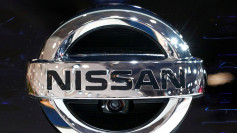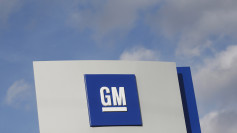Hatches, SUVs, pickup trucks, and sedans now have the ability to keep their occupants safer. With recent advancements in technology, cars are getting smarter and the battle for the safest car which will help you survive the first crash, or even the second crash, intensified.
When buying a car, one of the first questions is related to your safety. Is it safe for the driver and the passengers? Are airbags really efficient if the car crash? What does the car offer to prevent possible accidents? In addition to that, car owners should be concerned about Multiple Impact Crashes (MICs). Around 25%-40% of all car crashes aren't one crash, but several. The most common is the rear-end collision that usually results in another one, but there are many other situations that this can happen.
If you are planning to buy a car, or even if you don't. You may want to check out the new technologies present that will help you survive the second crash. Here are some of the technology that offers extra protection in several types of secondary impacts.
Smarter Airbags
Most car's airbag control modules (ACM) get confused with multiple collision. This result in early or late airbags deployment or the airbags would not open at all. Hyundai luckily saw the problem and created the first multi-collision airbag system in the world. Hyundai had begun applying this technology to their newly released cars as well as the cars of its sister carmaker Kia.
The idea is to reinforce levels of protection and care in cases where the primary impact is followed by collisions with secondary objects such as trees and poles, among others. The technology calculates the force and angle as well as to detect the position of the occupants in the cabin after an initial collision and thereby inflates the airbags even more quickly when the initial safety systems may not be effective.
Post Car Braking Tech For Deadly Drifts
The probability of a car that had been hit in the rear, which resulted in the deadly drift and hit other vehicles and objects is higher than you might think. This is why Volkswagen and Ford both had perfected their own post-collision automatic braking technology.
This technology works from sensors that identify the collision. By identifying that the driver has lost control of the vehicle and had drifted badly, the automatic after-collision braking system is triggered to stop the car's ricochet for a few minutes and then allow it to move again for emergency responders. By significantly reducing the residual kinetic energy of the vehicle, the risks of collisions subsequent to the first impact are also reduced. This automatic post-collision braking is limited by the Electronic Stability Control (ESC), which ensures a marked, effective, and safe deceleration.
Brace Yourself For Accidents
The Volvo XC90 was named the safest vehicle in the United Kingdom and this is no surprise. The model originally launched in 2002 and currently in the second generation was recognized due to the presence of several safety features, in particular, the automatic emergency braking system.
The Volvo XC90 gets on the brakes when it can tell you're about to have crashed the vehicle in front of you. This helps transfer crash energy into the car rather than your neck while also reducing the chance of a secondary crash. This technology is a part of the latest support system Volvo has that is designed to help drivers avoid multi-stage accidents.
It also has the distance alert that helps the driver to maintain a safe distance from the vehicle ahead and avoid collisions. The Distance Alert warns drivers with a red light on the windscreen as soon as the arc gets too close to the vehicle ahead, If the Distance Alert does not have the expected effect, a flashing light and an audible alarm will be used to warn the driver. Finally, the automatic emergency brake is activated. All this happens in just a few seconds.
While this latest innovations to help you survive multi-collision accidents is amazing, your best bet is still to prevent a collision by good driving habits.





